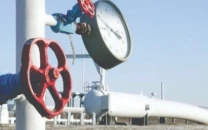SpaceX launches 23 Starlink satellites from California's central coast
SpaceX achieves its 401st orbital-class booster recovery, advancing its mission for reusable rocket technology

SpaceX launched 23 Starlink internet satellites into orbit today (Jan. 24) from California's Vandenberg Space Force Base. The Falcon 9 rocket lifted off at 9:07 a.m. EST (1407 GMT; 6:07 a.m. local time), marking another milestone in the company's ambitious space program.
The first stage of the Falcon 9 rocket returned to Earth just eight minutes after liftoff, landing smoothly on the drone ship "Of Course I Still Love You" in the Pacific Ocean. This marks SpaceX's 401st successful recovery of an orbital-class booster, a critical achievement in the company's drive toward reusable rocketry.
According to SpaceX, this particular booster has now completed 23 missions, with 14 of those specifically dedicated to Starlink deployments. The rocket’s upper stage will deliver the 23 satellites to low Earth orbit, where they are expected to be deployed approximately 64 minutes after launch.
The launch represents the 11th Falcon 9 mission of 2025 and the seventh Starlink-focused mission this year. Starlink, already the largest satellite constellation in history, continues to expand. The network currently includes more than 6,900 operational satellites, according to astrophysicist and satellite tracker Jonathan McDowell.
SpaceX's Starlink program aims to provide high-speed internet access worldwide, particularly in remote and underserved regions. With this latest launch, the constellation grows closer to achieving global coverage.
This mission underscores SpaceX's continued innovation and dominance in the commercial space industry, reinforcing its role as a leader in satellite deployment and reusable rocket technology.



















COMMENTS
Comments are moderated and generally will be posted if they are on-topic and not abusive.
For more information, please see our Comments FAQ